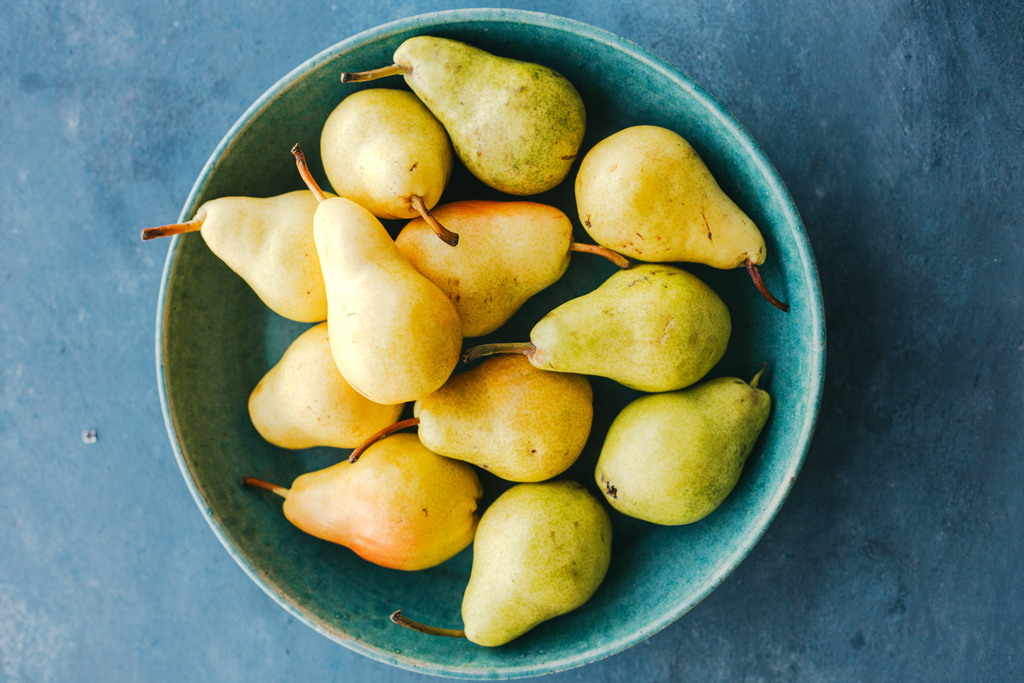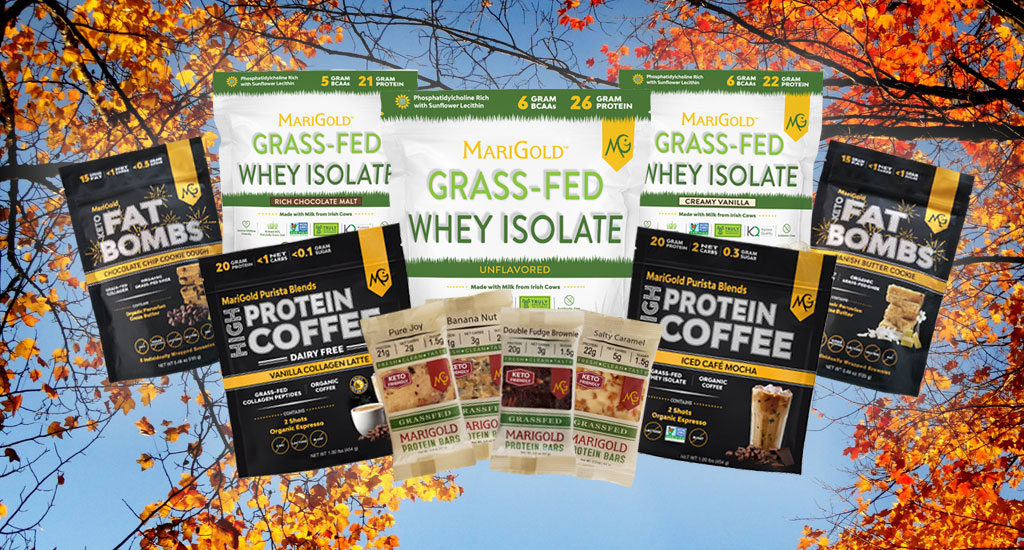There are plenty of reasons to fawn over summer’s abundance of crisp lettuce heads, plump tomatoes, and juicy local berries. But when sweater weather rolls around, there are still plenty of impressive and seasonal powerfoods at their flavor and nutritional peak. While everyone loves pumpkins, carrots, and apples for their comfort-food appeal, there are some lower-profile vegetables and fruits that you should be scouring markets for this fall. Combat common maladies and breathe new life into your menu with these underrated cold-weather finds to hold you over until asparagus season.
1. Concord Grapes
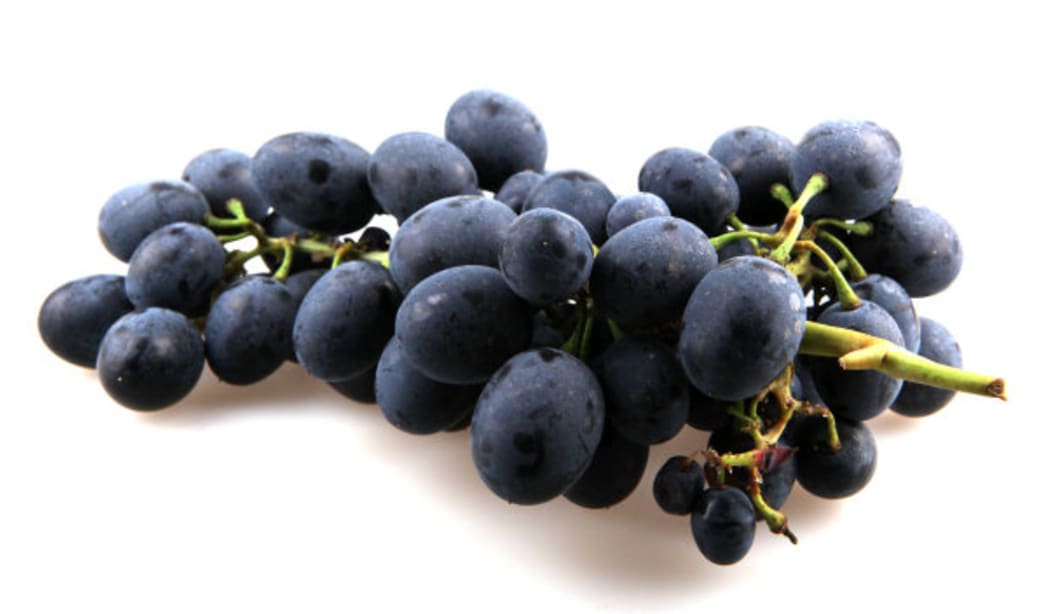 Better Nutrition
Better NutritionRed and green grapes are year-round finds in the produce aisle, but these not-to-be-missed sweet-tart gems are a true harbinger of fall. Native to American soil, oh-so-seasonal concord grapes are blessed with a luscious, sweet interior that is as grape-y tasting as a grape can be. Their deep, purple-blue hue marks the presence of a payload of beneficial polyphenols—the same sort of potent free-radical-annihilating antioxidants found in berries. Recent evidence suggests that polyphenols from concords can bolster mental functioning and fortify heart health by helping our blood vessels dilate for better blood flow. These small-but-mighty nutritional powerhouses also offer up vitamin C, vitamin K, and manganese, a mineral that’s necessary to activate enzymes involved in the metabolism of carbohydrates and amino acids.
In the Kitchen: It’s never a bad idea to nosh on concord grapes by the handful, just as soon as they’re purchased from local markets. And DIY jam and jellies are a natural fit. But don’t stop there. Use grapes in baked goods, toss them into fruit and vegetable salads, and make them a star of compotes to be strewn over fish, meat, or a bowl of yogurt. Grapes also freeze well. Rinse, dry, and freeze them on a baking sheet. You can cook or bake with frozen concords—or snack on them straight from the freezer for a frosty treat.
2. Celery Root
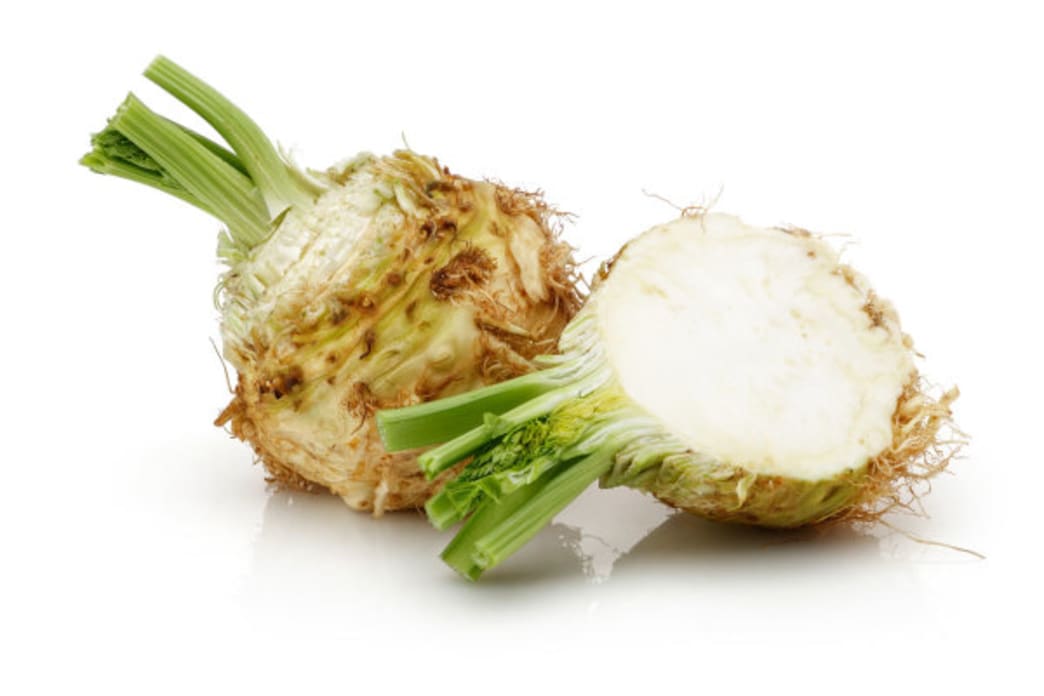 Better Nutrition
Better NutritionHere is proof that beauty is only skin deep in the vegetable world. Lumpy and gnarled celery root, also called celeriac, is exactly what its moniker claims it to be—the sizable root of a celery plant. What it lacks in aesthetics, subterranean celery root makes up for with a fresh flavor that wanders between parsley and celery, which is in the same family as parsley. It also boasts ample amounts of vitamin K—a single-cup serving delivers nearly a day’s requirement for this nutrient. A recent study in the journal Nutrients suggests that people with higher blood levels of vitamin K are at a lower risk of death from cardiovascular causes. Vitamin K is also vital for proper blood clotting and bone strength. Celery root supplies a range of other essential nutrients, including vitamin C, phosphorus, and potassium, and it’s one of the lower-sugar root vegetables—its carbs hail mostly from slower-digesting complex carbohydrates. Bonus: It’s super-versatile, making it easy to eat as often as you like.
In the Kitchen: Celery root needs to be peeled generously with a sharp knife prior to eating. To peel, simply lop off the top and bottom so that the root sits flat, and work your knife down the sides to remove the knobs. Grate the pale-yellow raw flesh and use it in salads, sandwiches, and slaws; steam and mash for a lower-carb riff on mashed potatoes; cube and use in hashes; blend into puréed soups; slice thick and roast for a veg “steak.”
3. Pears
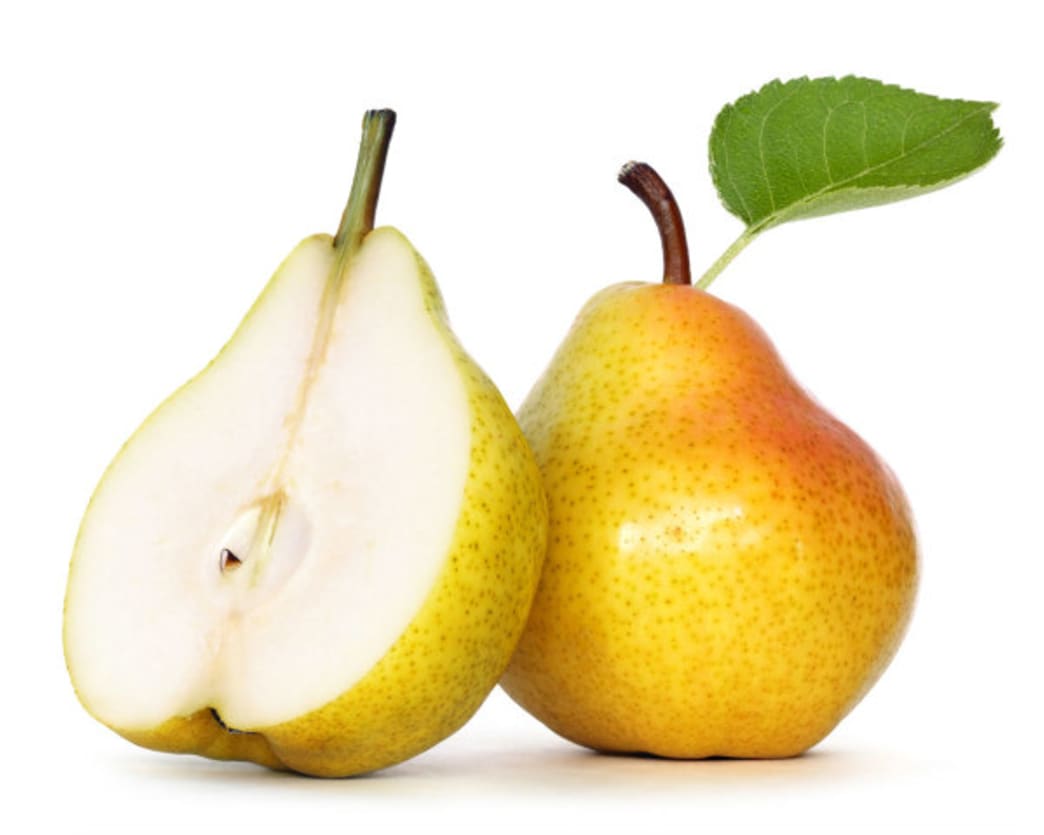 Better Nutrition
Better NutritionRing in sweater weather by making sure pears are on your shopping list. These juicy fall stalwarts are a delicious way to help you nail your daily fiber quota—a medium fruit delivers about 6 grams, more than you get from a similar-sized apple or a cup of cooked quinoa. Current recommendations advise 38 grams of fiber per day for men and 25 grams for women. It’s a good number to reach for, since fiber can help stabilize blood sugar numbers, improve your cholesterol profile, feed the beneficial bacteria in your digestive tract, and keep you feeling full to help regulate calorie intake. Tapping into nearly a decade of data from the National Health and Nutrition Examination Survey, which involved 24,808 adults, researchers from Louisiana State University discovered that pear eaters on average weighed nearly 8 pounds less than people who did not include the fruit in their diets, despite the fact that overall calorie intake was about the same. Lovers of pears were also found to have higher intakes of vital nutrients such as vitamin C, potassium, and magnesium. What’s more, the curvy fruit is a notable source of health-boosting phenolic antioxidants.
In the Kitchen: Bartletts are America’s favorite pear, but this fall try sampling other varieties, including Bosc, Anjou, Seckel, and ultra-crisp Asian. Pears are a perfect out-of-hand snack, but you can also add slices to oatmeal, yogurt, toast (try placing slices on top of a slick of nut butter), and even salads for a sweet counterpoint to earthy-tasting vegetables. And blend into smoothies for a drink with seasonal flare.
4. Sunchokes
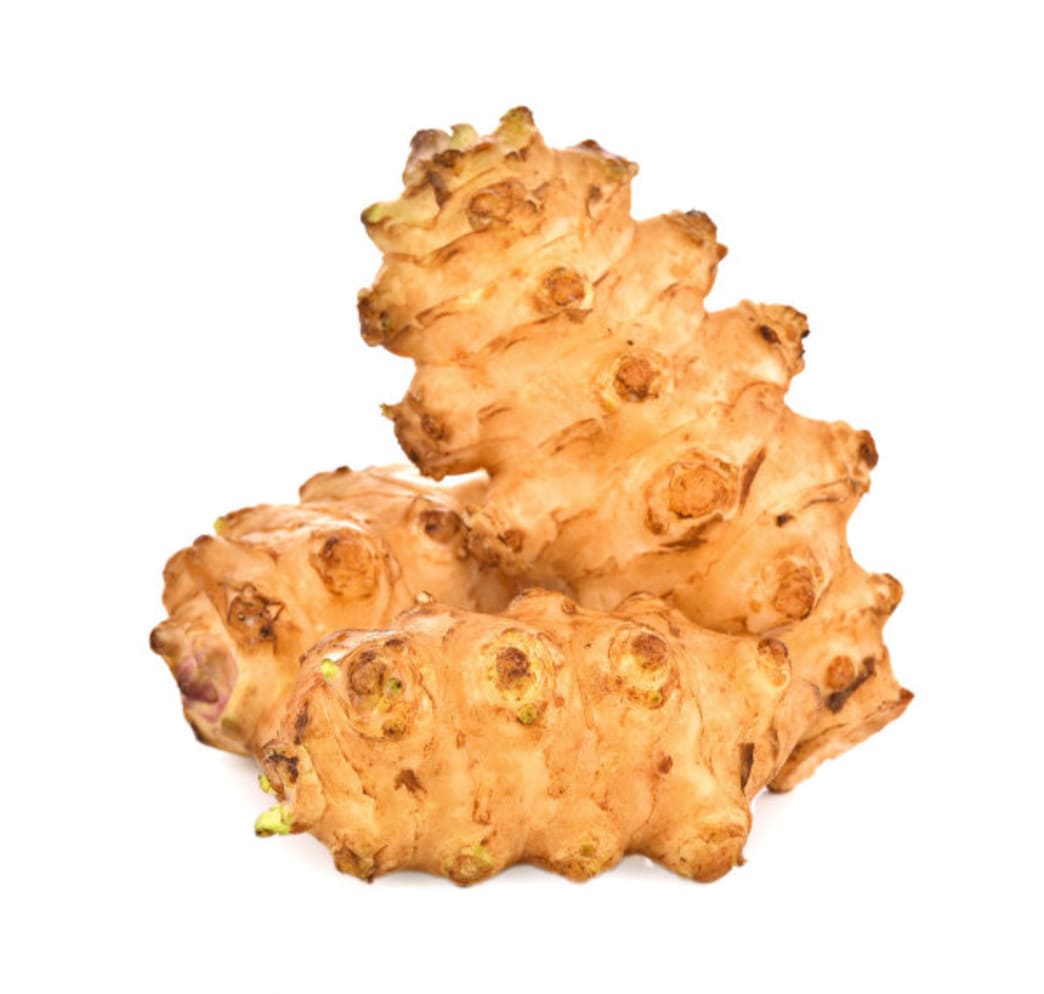 Better Nutrition
Better NutritionThis knobby vegetable is the root tuber of a plant in the sunflower family and is also called Jerusalem artichoke, though it’s not native to the Holy Land and is unrelated to artichokes. It will add crisp texture and a bright flavor reminiscent of jicama, water chestnuts, and apple to your fall menu. Nutritionally, sunchokes boast lofty amounts of the soluble fiber inulin. Non-digestible fibers such as inulin are known as prebiotics since they provide a fuel source for your gut microbiota, which can then work harder to improve your digestive, immune, and mental health. This often-overlooked tuber is also a surprising source of iron. As part of the mechanism that transports oxygen to various tissues including muscle, iron is an essential part of keeping you feeling energized.
In the Kitchen: Unlike potatoes, sunchokes can be eaten raw, so try slicing them very thinly and adding to salads for some tasty crunch. Or cut them into larger pieces and use as a delivery system for dips. Their thin, edible skin does not need to be peeled before eating. You can also sauté slices for use in pasta dishes, roast chunks as part of a root vegetable medley, and simmer cubes in hearty stews. For a much healthier take on French fries, slice sunchokes into matchsticks; toss with oil, salt, and pepper; and bake at 350°F for roughly 15 minutes.
5. Parsnips
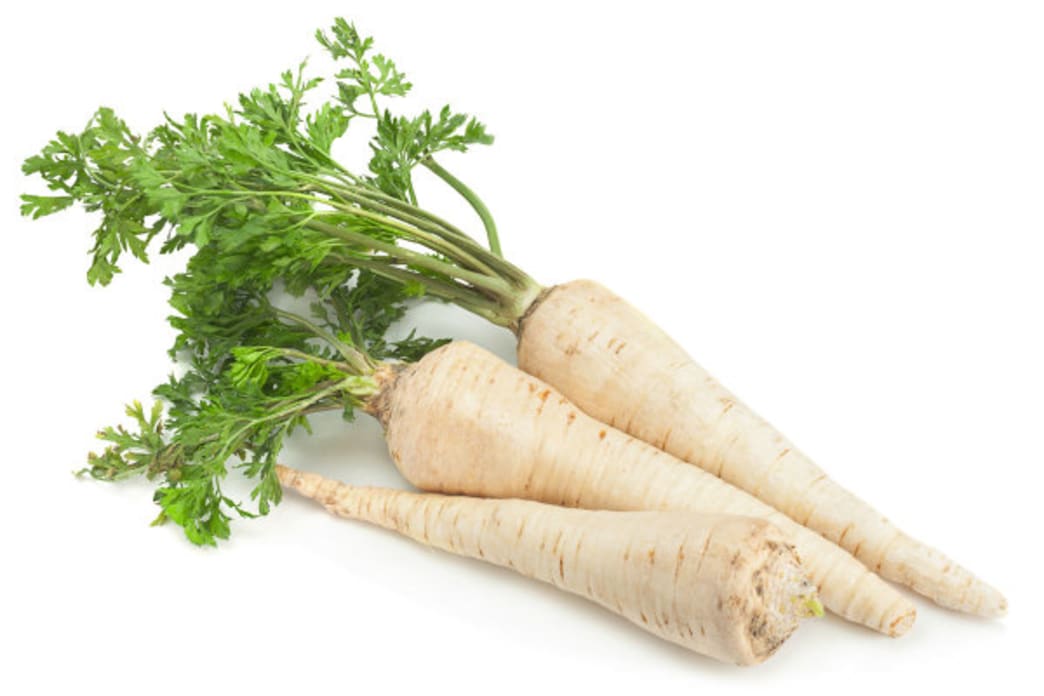 Better Nutrition
Better NutritionWhen you take a peek at the nutritional numbers, it’s clear that even Bugs Bunny should chip away at this ghostly cousin of the carrot. Parsnips possess a nutty-earthy flavor and a deep concentration of nutrients that can sharpen your health. These include vitamin C, vitamin K, potassium, and folate. A report in the American Journal of Clinical Nutrition presented evidence to show that if we consume more folate-rich foods such as parsnips when we are younger, it will pay off in lower blood pressure numbers as we age. Root harder for parsnips and you’ll also benefit from their dietary fiber—roughly 7 grams in a 1-cup serving, which happens to be about 70 percent more than what you get from carrots. According to a recent analysis of studies conducted over the past 40 years, high-fiber eaters—those pushing past the 30 grams a day mark—have a 15–30 percent lower risk of suffering from some of today’s biggest killers, including heart attack, stroke, type 2 diabetes, and colorectal cancer, compared to people who eat a fiber-poor diet.
In the Kitchen: While parsnips can certainly be eaten raw—try spiralizing them and tossing with a dressing—many people prefer them cooked, which softens their texture and amplifies their natural sweetness. Stews, soups, and chili are natural fits for hardy parsnips. You can also roast them like you would other root vegetables for a seasonal side-dish.
Written by Matthew Kadey, MS, RD for Better Nutrition and legally licensed through the Matcha publisher network. Please direct all licensing questions to legal@getmatcha.com.
Featured image provided by Better Nutrition
Boost Your Fall Nutrition with MariGold!
At MariGold, we design all our snacks to treat your body well in many ways. Not only do we use REAL FOOD ingredients, but everything is non-GMO, gluten-free, soy-free, chemical and preservative-free, and is HEALTHY and DELICIOUS!
MariGold Whey Isolate Protein Powder contains all the amino acids for healthy body functions. Amino acids, the building blocks of protein, are used by the immune system during infection and illness to help us recover.
In addition to the 9 essential amino acids found in whey isolate protein, it also contains BCAAs (branched chain amino acids) that help boost immune cells. Whey also contains immunoglobulins, which are a class of proteins present in the serum and cells of the immune system that function as antibodies.
Our Whey Isolate Protein Powder also contains non-GMO Sunflower Lecithin, which helps to protect the delicate lining of the digestive system. Because our immune system is directly connected to our gut, improving our digestion and gut health helps to boost our immunity as well.
And there’s even more! Our flavored protein powders (Rich Chocolate Malt and Creamy Vanilla) contain L-glutamine, which also promotes digestive health.
Our Protein Bars and Whey Protein Coffee contain the same grass-fed protein powder. Both are excellent morning breakfast options!
Many of our protein bars also contain L-Glutamine for increased gut health, so they are the perfect healthy snack option to have around for the changing seasons. They can help you feel full longer and satiate cravings so you’re not grabbing for an unhealthy snack during the day. You can enjoy flavors like Double Fudge Brownie and Oatmeal Cookie without the junk or the guilt!


